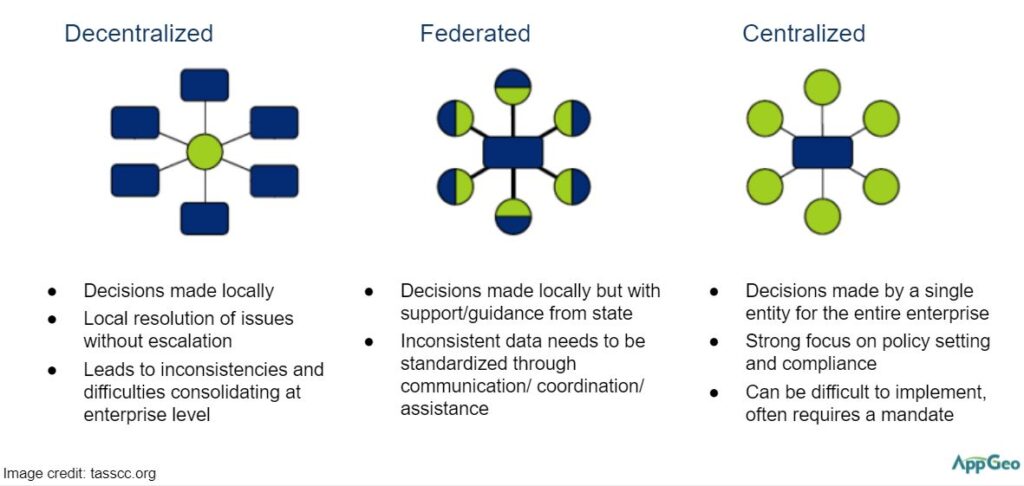Introduction
Data is one of your organization’s most valuable assets, but without the right framework in place, it can also be a source of risk. A strong data governance plan ensures your data is secure, accurate, and used efficiently, helping you make better decisions and stay compliant with regulations.
This guide will walk you through the 8 key steps to create a data governance plan that transforms your data into a strategic advantage. From improving data quality to implementing access controls, these steps will help you build a solid foundation for managing and protecting your data.
Ready to take control of your data? Let’s get started!
Step 1: Define Your Data Governance Objectives and Scope
Start by clarifying the objectives of your data governance plan. What are your goals? Are you focusing on data quality, improving compliance, enhancing security, or making data-driven decisions easier? Defining your objectives helps establish a clear direction and a foundation for the framework. Consider reviewing a data governance eBook for more in-depth insight into common objectives and the planning phase.
Step 2: Establish Roles and Structure
Form a data governance committee that includes representatives from IT, legal, compliance, sales, and customer success teams. These stakeholders will be responsible for setting the vision, policies, and strategic direction for the governance plan. Assign specific roles to ensure accountability, such as:
| Role | Responsibility |
| Data Steward | Ensures data quality and integrity. |
| Data Owner | Oversees policies and usage guidelines. |
| Data Custodian | Manages data storage, access, and security. |
| Data Governance Officer | Leads the overall data governance efforts. |
Explore different governance models, such as centralized, decentralized, or federated to fit your organization’s needs.

Step 3: Develop Policies and Standards
Policies and standards guide how data is collected, stored, and used. Important policy areas to define include:
- Data Collection Policy: Set consent mechanisms for data collection.
- Data Access and Sharing Policy: Outline access permissions and sharing protocols.
- Data Retention Policy: Establish guidelines for data storage, retention, and disposal, and make sure your third-party applications have the settings available to accommodate your policies.
Pro tip: Set data standards such as naming conventions, formats, and integration rules to maintain consistency, organization and interoperability across systems.
Step 4: Assess the Current State
Conduct a thorough assessment of your current data environment. Evaluate existing data quality, security posture, and compliance status. This step helps identify gaps and areas for improvement. Questions to ask during your assessment:
- Where is your data stored?
- How is it currently being used?
- Who has access to it?
Pro tip: To find out where your organization stores its data, look for the administrative settings within your cloud service. The data location and geographic region for the data center where your data is stored is typically located in a “Settings” or “Privacy” section. There could also be more granual data region settings within the admin console.
By performing this audit, you’ll be able to create an action plan for improving your data governance processes.
Step 5: Build a Data Model
Choose a data governance model suited to your organization’s needs—whether it’s centralized, decentralized, or a hybrid approach. Utilize data modeling techniques, such as entity relationship diagrams (ERD), to visualize your data and its relationships. This will help enhance transparency, streamline data governance, and ensure compliance.
Here’s an example of an ER diagram for college database admins to reference when creating a database.

Step 6: Implement Data Access Controls
Limit access to sensitive data by implementing data access controls. Use the principle of least privilege (POLP), which ensures that only authorized personnel can access specific data. Maintain records of employee access levels and adjust access when needed, particularly for temporary projects.
Step 7: Provide Training and Awareness
A key part of successful data governance is training and awareness. Ensure all employees understand their responsibilities in handling data. Hold regular sessions to teach your team about the new policies, and make training mandatory for those handling sensitive data. This helps prevent security breaches and ensures compliance.
Step 8: Monitor and Measure Performance Over Time
Establish Key Performance Indicators (KPIs) to track the effectiveness of your data governance plan. KPIs might include:
- Data Quality Index: Track the accuracy and consistency of your data.
- Compliance Adherence Rate: Measure how well the organization is adhering to regulatory requirements.
- Incident Response Time: Monitor how quickly your team responds to security breaches or data incidents.
Regularly review these KPIs to identify trends and make data governance improvements over time.
Conclusion
Creating a solid data governance framework is vital for your organization’s long-term success. It ensures compliance with laws and regulations, enhances decision-making, reduces risk, and boosts overall operational efficiency. By following these eight steps, you’ll have a comprehensive, actionable plan to manage your data effectively and safeguard sensitive information.
Ready to get started? Implement your data governance plan today with FormAssembly and begin realizing your data’s full potential.

